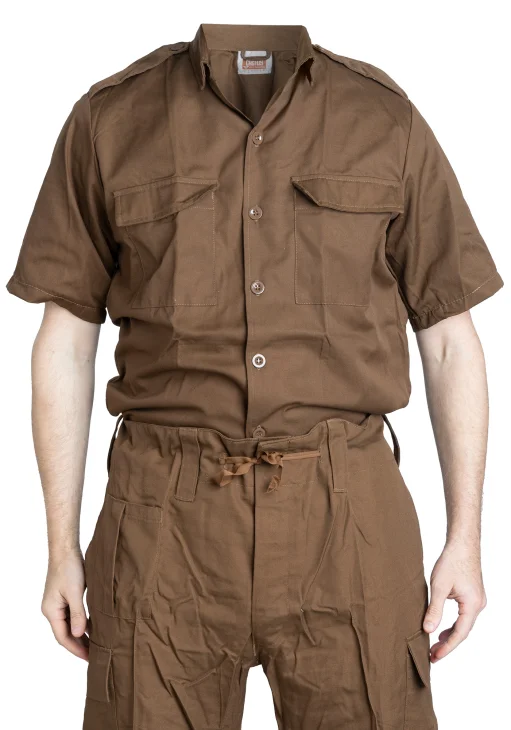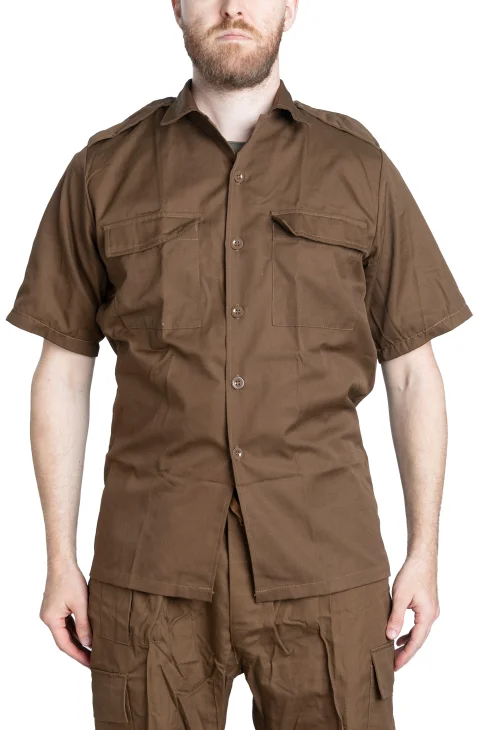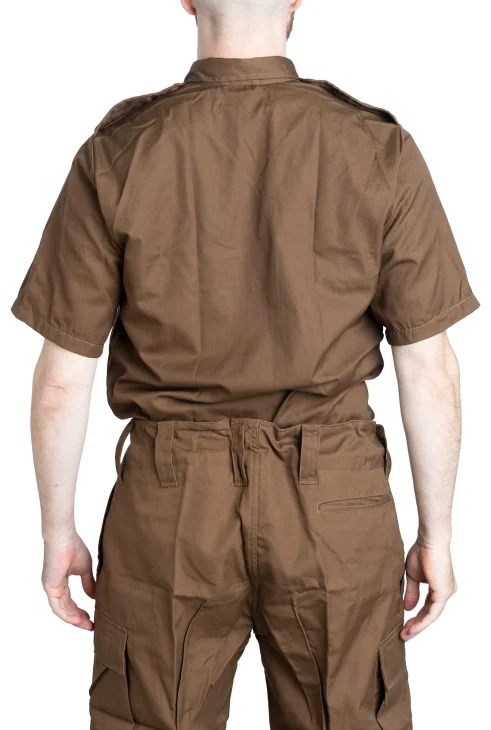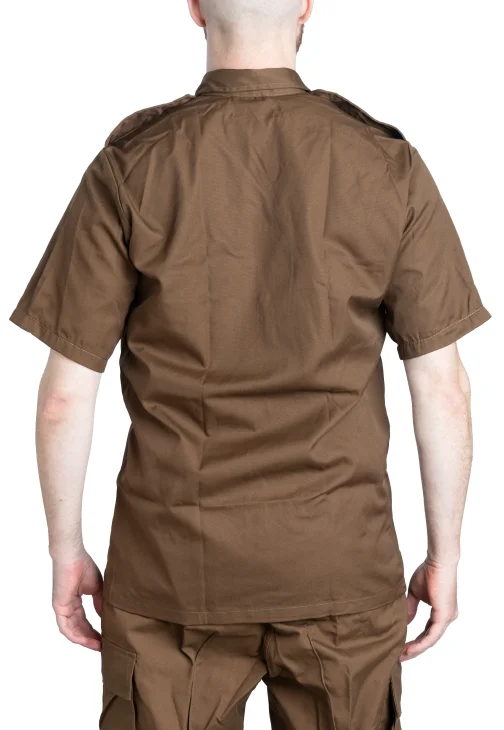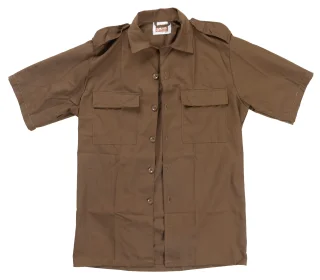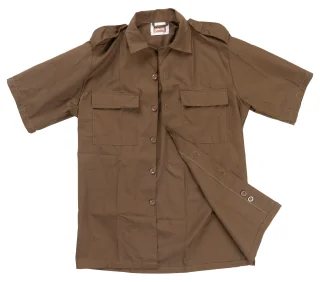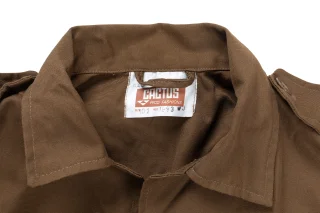The standard issue short-sleeved field shirt of the South African Defence Force. The SADF uniforms are becoming rarer and rarer, and they ain't cheap anymore, but we still managed to get hold of at least one small batch of these. This time they are even completely unused. So, get yours while you still can.
History
Originally, the South African Defence Force (SADF) used old British khakis, but in the early 1970s, they switched to the classic Nutria Brown uniforms. Initially, the field shirts had long sleeves, which people kept rolling up. At some point in the 1980s, the SADF realized that it might be smart to also make short-sleeved shirts to get rid of rolling those sleeves. For a bit colder weather, well, Finnish summer cold weather, they also had field jackets.
The color choice may seem a bit strange, but it works reasonably well in South African bush. Nutria Brown was used on all sorts of clothes and gear and by all kinds of troops.
These uniforms were taken out of use in 1994, pretty much at the same time as Apartheid was terminated. So, this color scheme represents the darker side of South African history. SADF was replaced by SANDF (South African National Defence Force) and the Nutria Brown color scheme was replaced by the Soldier 2000 camouflage pattern, which is still in use in South Africa.
Features
This is a pretty simple short-sleeved field shirt. It has a button closure, soft collar, epaulets on the shoulders, and breast pockets with hidden buttons. The material is polycotton, but the percentages aren’t given.
Size info
These are made in simple sizes that seem to be pretty accurate. Buy your normal size, and you get a fairly relaxed shirt. The fit is more of a classic one rather than slim, as you can see from the photos.
Condition
Unissued South African military surplus. For some reason these shirts never made it out of the warehouse. Many of them are still wrapped in plastic. This batch contains shirts at least from the early 1990s, but there can be some older ones in the mix too. Since these have been in the warehouse for decades, ironing is at least probably a good idea.
Store
00390 Helsinki
Mon-Fri 10:00-20:00
Sat 10:00-19:00
Sun 12:00-17:00
Exceptions to opening hours on the Store page.
Propaganda
Contact us
[email protected]
Mon-Fri 08:00-20:00 EET
Sat 10:00-18:00 EET
Sun 10:00-18:00 EET
See all Contact Information.
